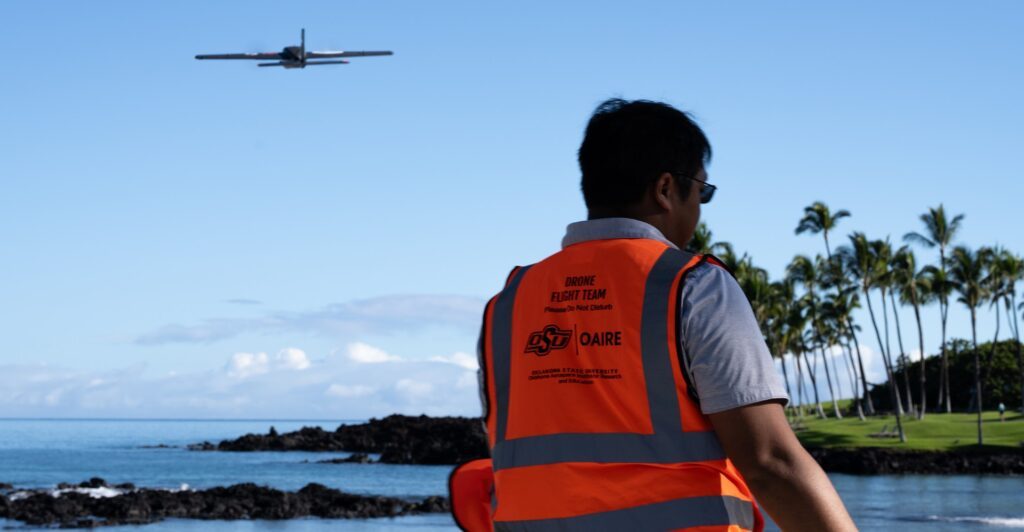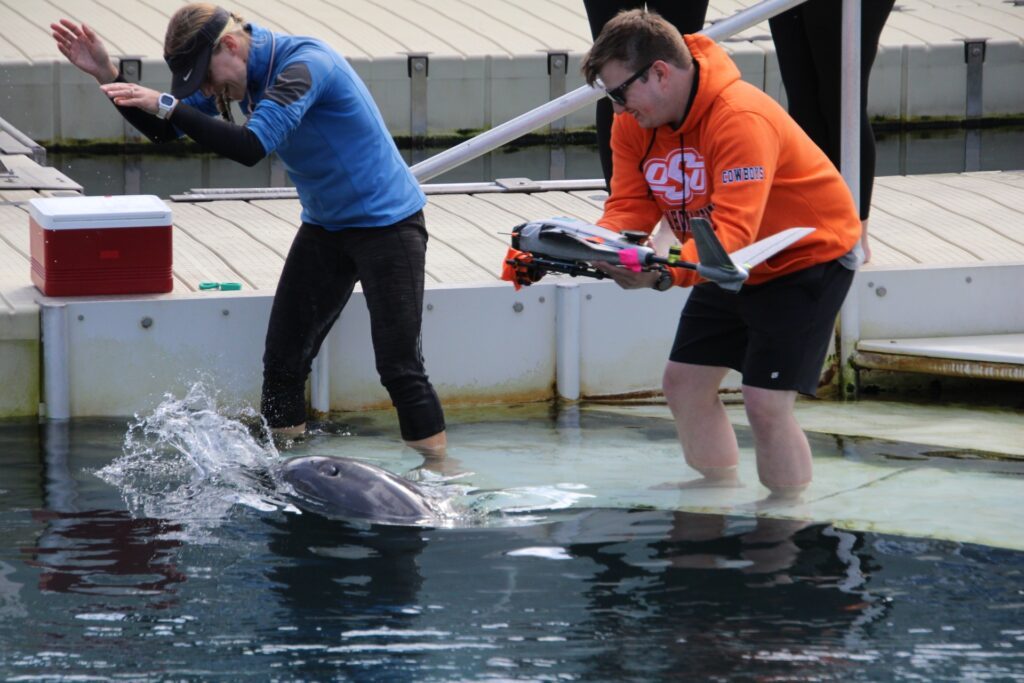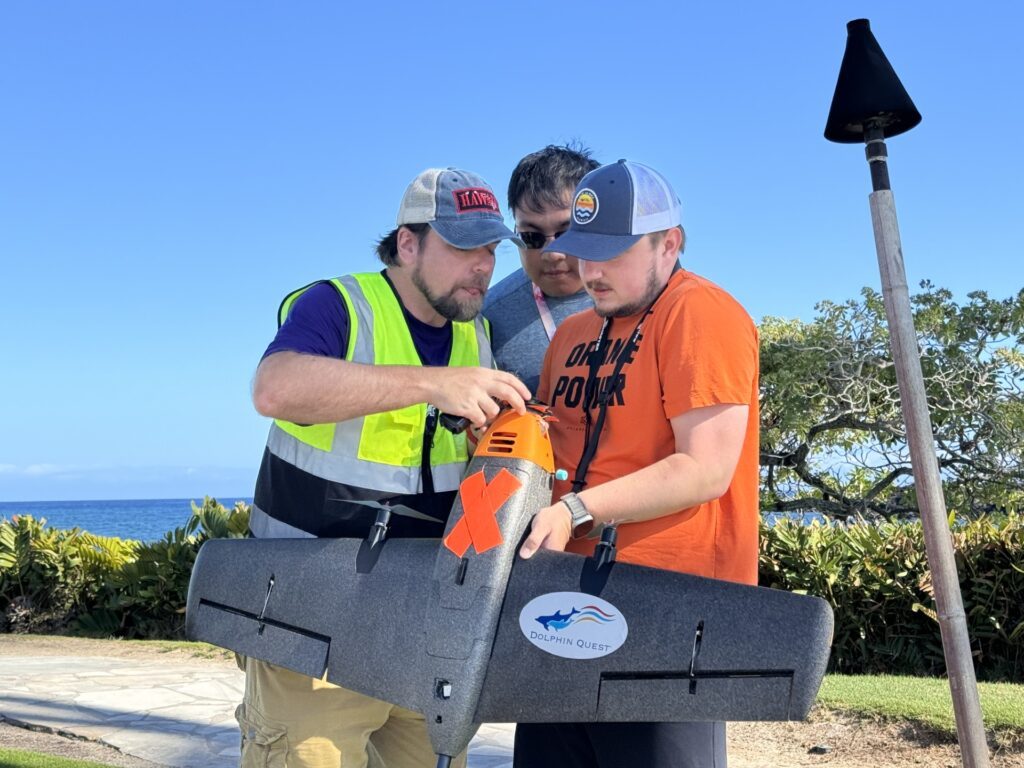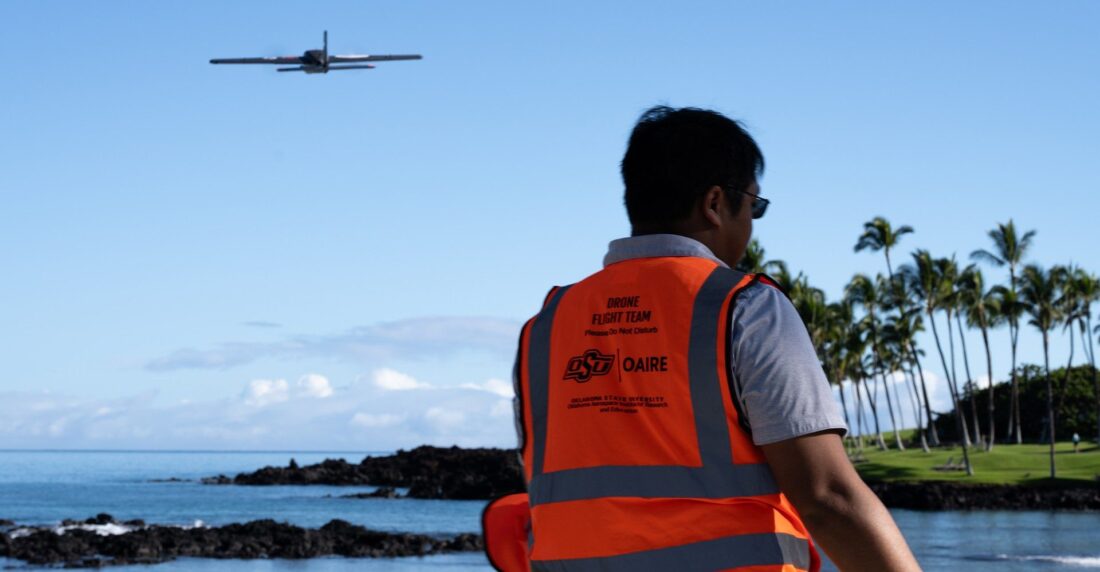Innovative UAV Design Allows Scientists to Collect Biological Samples from Dolphins Without Disturbing Them
by DRONELIFE Features Editor Jim Magil
Scientists studying dolphins have long been confounded by the problem of how to assess the health of these animals in the wild. But thanks to a drone-based system designed by researchers in Texas and Oklahoma, scientists may soon be diagnosing the bodily functions of these mammals in the middle of the ocean.


About seven years ago, Professor Jason Bruck, whose work includes the study of cetaceans — the order of marine animals that includes whales, dolphins and porpoises – was faced with a problem. Although at the time, drones such as the Snotbot, developed by Massachusetts- based Ocean Alliance and Olin College of Engineering, had been in use for several years to measure the health of whales, the technology was not suitable for the study of smaller cetaceans.
The Snotbot system works by flying a quadcopter through the spray shot out of the blow hole on the whale’s back to collect biological samples.
“Since a big whale breathes 50 feet into the air, that’s easy to do,” said Bruck, who currently works as an assistant professor of biology at Stephen F. Austin State University in Nacogdoches, Texas. “But when they tried to employ some of these techniques in small cetaceans, like dolphins and porpoises it didn’t work.”
One problem was that unlike whales, which largely ignore the quadcopter buzzing above them, dolphins are much more sensitive to the presence of airborne objects, and their accompanying noise, in the animal’s environment. A second problem involved the downdraft from the quadcopter’s rotors, which would dissipate the plume from the porpoise’s blowhole, rather than allowing it to be collected.


“So, you can’t collect these biological samples by just flinging Petri dishes on an Inspire and hoping for the best. So, we looked at the problem and said, ‘Okay, how do we solve this?’” he said.
While he was wrestling with this dilemma, Bruck transferred from the University of St. Andrews in Scotland, where he was completing his post-doctoral work, to Oklahoma State University, where he worked for a time as a visiting assistant professor. While at OSU, he met up with members of that university’s drone research team, who were working on developing quieter drones. “That is one thing you would definitely need to do with a drone that was supposed to collect a breath sample from a bottlenose dolphin,” he said.
Jamey Jacob, an OSU department chair and professor of mechanical and aerospace engineering, picks up the story.
“Jason approached us when he was here in the Department of Integrative Biology at OSU,” Jacob said. “He brought this idea to us and said, ‘This is a challenge and we’d like to see if your students in the aerospace engineering program can work on a solution for this.’”
The OSU drone team started working on an unmanned aerial vehicle design that was “stealthy” enough to approach a dolphin without disturbing the animal.
“Their eyes sit on both sides of their head. But we figured out that directly behind them, they have a blind spot,” Jacob said. Once they determined how the drone should approach the animal, the team’s next challenge was to come up with a drone design that solved the noise problem.
“We found out pretty quickly that they could easily hear things such as small quad rotors and that they would react to them if they heard the noise.” The team soon abandoned the quadcopter design and began working on a fixed-wing unmanned aircraft that was quieter than a quadcopter and had the added benefit of having the endurance to fly miles out over the ocean to where a pod of dolphins could be found.
Under the project dubbed PHASM, or Passive Health Assessment for Sea Mammals, and using off-the-shelf drone components, OSU the team built an electric vertical takeoff and landing (EVTOL) aircraft, which could be hand-launched from a boat at sea and guided to its target via first-person view technology. On its return flight to the boat the drone operators would use a net to catch the aircraft and bring it back on board.

The team gave each version of the drone a pet name to distinguish it from earlier models. “Flipper, for example, was the most recent one that we used,” Jacob said.
Bruck said the final version of the aircraft his colleagues designed was a modified HEEWING T2 Cruza. “But everything about it was gutted and, and all new electronics were put in and a whole new nose cone, to incorporate the siphon, was put in,”
The siphon is the drone’s critical piece of equipment, specially designed to capture the small volume of chuff exhaled through the dolphin’s blowhole. “It has an iris on it, which opens up like a flower. And then the vacuum sucks the breath in,” he said.
To ensure that the siphon would be able to collect samples of chuff from dolphins in the wild, the OSU team created a chuff simulator in the laboratory, that would expel a similar volume of material into the air as a live animal would. The team conducted flight tests in the laboratory and at the OSU’s drone flight field in Stillwater, Oklahoma, before moving on to conduct tests on live dolphins at Dolphin Quest, a commercial tourist attraction, in Oahu, Hawaii.
Bruck said that with the testing successfully completed the researchers hope to secure approval from the National Oceanic and Atmospheric Administration for use of the technology on the open sea within the next month or so. Plans call for the research team to begin drone flights to study the vulnerable dolphin population in Galveston Bay by December or early January.
“It’s a population of about 160-plus animals that doesn’t go anywhere. They will never leave,” he said. “So, the idea would be to go out in a boat and find the animals.”
Read more:

 Jim Magill is a Houston-based writer with almost a quarter-century of experience covering technical and economic developments in the oil and gas industry. After retiring in December 2019 as a senior editor with S&P Global Platts, Jim began writing about emerging technologies, such as artificial intelligence, robots and drones, and the ways in which they’re contributing to our society. In addition to DroneLife, Jim is a contributor to Forbes.com and his work has appeared in the Houston Chronicle, U.S. News & World Report, and Unmanned Systems, a publication of the Association for Unmanned Vehicle Systems International.
Jim Magill is a Houston-based writer with almost a quarter-century of experience covering technical and economic developments in the oil and gas industry. After retiring in December 2019 as a senior editor with S&P Global Platts, Jim began writing about emerging technologies, such as artificial intelligence, robots and drones, and the ways in which they’re contributing to our society. In addition to DroneLife, Jim is a contributor to Forbes.com and his work has appeared in the Houston Chronicle, U.S. News & World Report, and Unmanned Systems, a publication of the Association for Unmanned Vehicle Systems International.
Miriam McNabb is the Editor-in-Chief of DRONELIFE and CEO of JobForDrones, a professional drone services marketplace, and a fascinated observer of the emerging drone industry and the regulatory environment for drones. Miriam has penned over 3,000 articles focused on the commercial drone space and is an international speaker and recognized figure in the industry. Miriam has a degree from the University of Chicago and over 20 years of experience in high tech sales and marketing for new technologies.
For drone industry consulting or writing, Email Miriam.
TWITTER:@spaldingbarker
Subscribe to DroneLife here.


